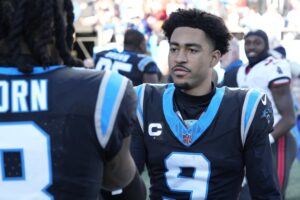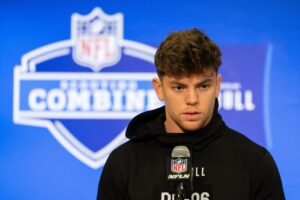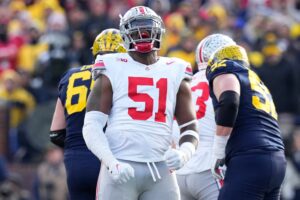It’s not a stretch to say the New Orleans Saints pass defense has been a liability for much of the last decade. New Orleans has finished 25th or worse in pass yards allowed in nearly every season since 2011, with 2013 and 2017 being the lone exceptions. Despite the progress made in 2017 with a revamped secondary, pass defense reemerged as the Saints biggest weakness again last season and the unit finished 2018 with the fourth most yards allowed through the air.
Thanks to a strong roster overall, New Orleans doesn’t need a top-ten pass defense to be successful. Mainly, they need to cut down on the number of big pass plays allowed and generate a more consistent pass rush.
Last season, New Orleans and 13 other teams averaged over 250 passing yards per game after just seven clubs topped this figure in 2017. If the Saints want to finish 2019 with Super Bowl trophy, they’ll first need to prove capable of stifling this plethora of productive passing attacks.
Here are some factors that could make or break the Saints 2019 pass defense.
Looking at the New Orleans Saints 2019 Pass Defense
Reasons for Optimism
New Additions to Already Strong Secondary
The Saints are poised to enter 2019 with a solid starting group in the secondary, consisting of cornerbacks Marshon Lattimore and Eli Apple, and safeties Marcus Williams and Vonn Bell. Slot cornerback Patrick Robinson is also set to return in 2019 after landing on injured reserve early in the season.
In the draft, New Orleans added depth with the selections of promising safeties Chauncey Gardner-Johnson and Saquan Hampton. In addition to playing both safety positions in college, these players have spent time at nickel back and Gardner-Johnson has even served as an outside cornerback. Considering Williams has had his share of mental mistakes in his two-year career, Gardner-Johnson or Hampton could even challenge the 2017 second rounder for the starting free safety role.
With veterans P.J. Williams and Ken Crawley set to return in reserve roles, New Orleans has decent depth to bank on in case of injury. Overall, this looks like the best secondary the Saints have employed in several years.
Marcus Davenport – Year Two
When New Orleans traded up in last year’s draft to select edge defender Marcus Davenport, it was clear coaches would ease his transition to the pro level and limit his playing time. Davenport played 50 percent or more snaps in just five games but showed tremendous potential despite limited opportunities.
Unfortunately, Davenport suffered a toe injury in his best pro performance to date; a two-sack effort against the Minnesota Vikings in week eight. Davenport returned to action four weeks later, but the toe injury never fully healed and limited him for the rest of the season.
Now Davenport appears to be fully recovered after undergoing surgery in February, and he’s set to enter training camp as the Saints starting right defensive end. Davenport should be one of the teams most closely watched players in 2019 as he attempts to meet his lofty potential.
All-Pro defensive end Cameron Jordan will continue to be a great asset for Davenport as a mentor and presence at the opposite defensive end spot. Jordan has recorded 42.5 sacks in the last four years and consistently attracts extra blockers. As opposing quarterbacks step away from Jordan’s side of the pocket, Davenport should have plenty of opportunities for pressures and sacks.
Davenport had some great moments last season, but he now needs to prove himself as a full-time starter and difference maker in the pass rush.
Ascending Play of Linebackers
Like their secondary, the Saints linebacking corps has greatly improved in a short period of time. The 2017 and 2018 offseasons saw the additions of A.J. Klein, Alex Anzalone, and Demario Davis, who are set to return in starting roles after a collectively great 2018 showing.
After struggling at times in his first year as a starter, Klein played better in a smaller role last season. Anzalone grew into a solid coverage linebacker after missing nearly all of his rookie year. Davis came to New Orleans with a reputation as a run-stopping and blitzing linebacker, but last season proved his coverage ability deserves praise as well. Together, this trio recorded nine sacks, including five from Davis.
While all three players were out of place at times in zone coverage, the group exceeded expectations in the passing game. Davis, Anzalone, and Klein have now each played a full season in the Saints defense and they should be able to build off a solid 2018 effort.
Potential Pitfalls for the Saints 2019 Pass Defense
More Injuries to Secondary
Few teams make it through an entire season with their starting secondary intact but the Saints have consistently had at least one key contributor out of action.
The season-ending ankle injury to Robinson robbed New Orleans of one of its biggest 2018 free agent signings just three games in. Lattimore and Crawley each missed three games in 2017 and then-Saints safety Kenny Vaccaro ended up on injured reserve after playing through a groin injury for much of the season. Injuries plagued the Saints secondary to such an extent in 2016 that at one point, undrafted rookies De’Vante Harris and Crawley were the starting cornerbacks.
There’s no way to prepare for injuries, except by ensuring there’s sufficient depth to help the secondary survive if a starter misses time. Fortunately, the Saints have successfully done so for the most part. They have several decent options at safety and nickel back if one or two players are injured. However, there’s no satisfying backup option if Lattimore or Apple miss time.
Crawley played mostly well as a starter in 2017 but was benched last season after allowing too many big pass plays early in the season. Right now, Crawley is likely the Saints most capable backup at outside cornerback. Behind him, there’s P.J. Williams who has generally been more successful defending the slot. Gardner-Johnson is another option, but while he has occasionally played outside cornerback, it’s unclear if this ability can translate to the NFL.
In this light, Lattimore is not only the best player in the Saints secondary; he’s also the group’s most irreplaceable player. Unless a promising backup option emerges in training camp, much of the Saints success defending the pass will hinge on Lattimore’s health.
Second Cornerback Spot Still an Issue?
While Apple is undoubtedly the Saints best option to start opposite Lattimore, that doesn’t mean there aren’t questions about his ability.
Apple became an immediate improvement over Crawley when he arrived via trade in week eight. However, Apple often struggled against top wide receivers and was penalized ten times in his ten regular season games with the Saints. Adjusting to a new defense halfway through the season couldn’t have been easy though, and Apple did look more comfortable near the end of the year.
A full offseason and training camp with the Saints should help Apple elevate his play and for now, the organization seems confident in him. New Orleans hasn’t signed a cornerback with significant NFL starting experience as of this writing and they did not draft a true cornerback. Apple needs to be successful in 2019 because there’s no clear fallback option.
Bottom Line on Saints 2019 Pass Defense
Right now, there’s no true weak link on the Saints defense. There’s talent at every position, but several players are still young and struggle with consistency.
Players like Marcus Williams and to a lesser extent Lattimore struggled in 2018 after enjoying standout rookie seasons in 2017. Meanwhile, Bell and Anzalone solidified their starting jobs after quiet starts to their respective careers. Sheldon Rankins emerged as a Pro Bowl player and Crawley lost his job. P.J Williams and Apple’s performances varied from week to week.
Many Saints defenders are at critical junctures in their careers as they enter their third or fourth seasons and by the end of this season, it should be more clear how many of these recent additions have long-term potential.
The Saints pass rush took a step forward in 2018, recording seven more sacks than in 2017, but consistency is an issue here as well. This was most evident in the postseason as New Orleans had just one sack in two games despite averaging three sacks per game in the regular season. Rankins is projected to start the season on the PUP list, so it will be largely up to Davenport to make plays when Jordan faces double teams.
The unit’s point of emphasis in training camp should be cutting down on big pass plays after New Orleans allowed 8.2 yards per pass attempt last season. Only three other teams allowed a higher average and the Saints were one of just two playoff teams that finished the regular season in the bottom 12. If New Orleans can’t improve in this area, they’ll be lucky to get back to the NFC Championship Game.
Fortunately, the Saints appear to have enough talent to strengthen their pass defense.
Main Photo:
Embed from Getty Images






